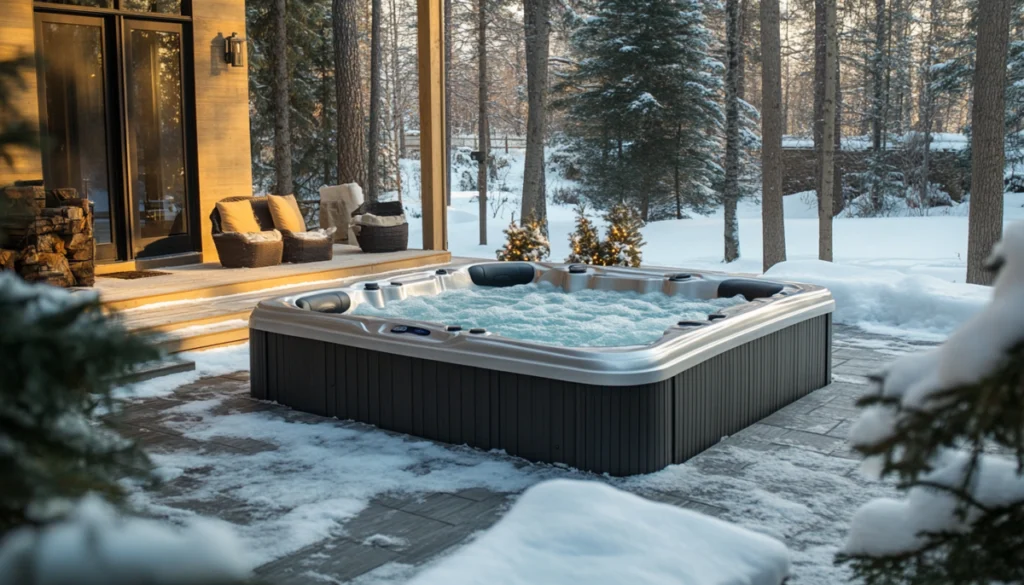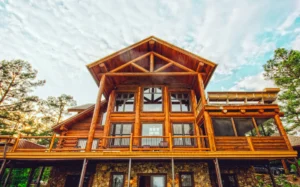Living in Colorado, you’re no stranger to our legendary winters—snow-draped mountains, crisp air, and sub-zero temperatures. But while we love the beauty of the season, your hot tub’s plumbing might not. If left unprotected, freezing temps can wreak havoc on your hot tub, especially if you’re up in higher altitudes where conditions can turn on a dime.
Winterizing your hot tub is about more than just protecting your investment—it’s about making sure your tub is ready to go when the snow melts and spring arrives. A little preparation now can save you from costly repairs later. Plus, there’s peace of mind in knowing that your hot tub will be safe through the coldest days of the year.
If you plan on heading out for a long winter vacation or simply want to give your spa a rest, winterizing is the smart move. Let’s dive into how to get it done right.
Preparing the Hot Tub for Winter
Before you shut down the hot tub for the season, you’ll want to prepare it properly. Start by giving your hot tub a thorough clean. Scrub away any buildup or grime, especially around the waterline and jets—this helps prevent corrosion and scaling during the off months. Once your tub is sparkling, balance the water chemistry. Make sure the pH, alkalinity, and sanitizer levels are all within their ideal ranges. This step ensures that the water won’t leave residue that can damage your tub’s surface while it sits through the winter.
After that, it’s time to remove the filters. Whether you’re storing the tub or keeping it running, clean those filters thoroughly. If you’re winterizing, remove them completely and let them dry out before storing them in a warm place. And don’t forget to give the filter housing a good clean while you’re at it—nothing should be left behind to grow mold while your tub hibernates.
If you’re planning on fully shutting down your tub, be sure to pick a day where temperatures are above freezing. You don’t want any water to freeze mid-drain. Trust me, getting ahead of the weather will save you some serious headaches later on.
Draining the Water and Removing Residual Moisture
Alright, here’s where the real work starts: draining your hot tub. You’ve cleaned and balanced the water, but now it’s time to remove every last drop. Start by cutting the power to your hot tub. Flip the breaker or unplug it—just make sure there’s no electricity running through the system before you begin. Next, grab a garden hose or, even better, a sump pump if you have one, and connect it to the drain valve at the base of the tub. Let the water flow out to a suitable area in your yard (far from your foundation, of course).
Now, the key here is getting all the water out, especially since Colorado winters are unforgiving. Even a small amount of water left in the plumbing or jets can freeze and expand, causing expensive damage. Once most of the water is gone, it’s time to break out the wet-dry vacuum. Use it to blow out the remaining water from the pipes, jets, and any crevices where moisture might hide. You’ll want to go over all the plumbing lines a couple of times to make sure there’s nothing left behind.
One final tip: as tempting as it is to call it a day once the tub looks empty, take the extra step of wiping down the inside with towels or a sponge. Any standing water, even a small puddle, can freeze and cause issues. This extra care now will make sure your relaxing spa stays in great shape through the cold months.
Protecting the Hot Tub with Insulation
Colorado’s winters don’t just bring cold—they bring biting cold. To keep your hot tub safe, proper insulation is a must. The first line of defense is a high-quality hot tub cover. Not just any cover will do—you need one that’s built to withstand snow and frigid temps. Make sure it’s snugly fitted and in good condition, with no cracks or worn spots. A damaged cover is a recipe for heat loss and snow damage.
For extra protection, consider adding a thermal blanket underneath the cover. These blankets add a layer of insulation that prevents heat from escaping, which is especially helpful when temperatures drop into the negatives. If your hot tub is in an exposed area, you might also think about setting up a windbreak—a fence, shrubs, or even a DIY windscreen can shield your tub from freezing gusts, helping to maintain temperature and reduce energy costs. When it comes to insulation, a little extra effort goes a long way in the Colorado cold!
Some spa models, like the Tranquility Harbor, have built-in insulation, meaning you don’t have to deal with spray foam. If yours relies on spray foam, it’s a good idea to double check it to make sure it’s in good shape.
Securing and Maintaining the Hot Tub Cover
Your hot tub cover is the first line of defense against the elements, especially in Colorado’s harsh winter. But it’s not just about slapping a cover on and calling it good—you need to make sure it’s in prime condition. First, give your cover a thorough clean. Use a non-abrasive cleaner to remove any dirt or debris. This prevents buildup that could lead to cracks or mildew over the winter months. Make sure it’s completely dry before you secure it to avoid trapping moisture, which can lead to mold.
Now, for the real Colorado-specific tip: snow. Heavy snow can weigh down your cover, potentially causing tears or warping. After any significant snowfall, make it a habit to gently brush the snow off the cover. If you’re in an area with high winds, consider investing in cover straps or buckles to keep it securely in place. With these precautions, your cover will stay strong and protect your hot tub all winter long.
Regular Winter Maintenance
Even after you’ve winterized your hot tub, it’s not a “set it and forget it” situation. Colorado winters can be unpredictable, and a little maintenance throughout the season will keep your hot tub safe. First, check your water levels every few weeks, especially after a big freeze or snowstorm. Low water levels can lead to issues with your pump and heater. Even if your hot tub is completely shut down, making sure everything stays in place helps prevent damage.
You’ll also want to check your hot tub’s chemical levels, particularly if you’ve decided to keep it running throughout winter. Test the water to ensure the pH and alkalinity are stable. Finally, circulate the water once a week by running the pumps for a few minutes—this prevents stagnation and potential freeze-ups. Keeping an eye on these details means you’ll be ready to fire up the hot tub as soon as the snow melts. Of course, you can also hire professionals like us to just do it for you.
Final Thoughts on Hot Tub Winterization: Preparing for Spring
As the Colorado snow starts to melt and spring rolls around, it’s time to reverse your winterization process. The first thing you’ll need to do is flush out any antifreeze you’ve used in the pipes and jets. Refill the hot tub with fresh water, balance the chemicals, and double-check the filters before putting them back in place. Once the water’s circulating and the heater’s running, your hot tub will be back in action, ready for another year of enjoyment. Taking care of these spring tasks ensures your hot tub starts the season fresh and ready for those sunny Colorado days.







